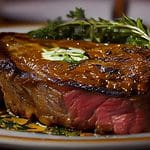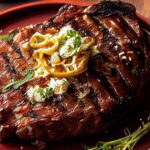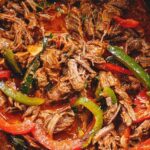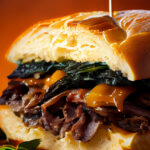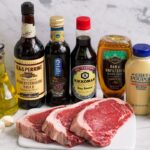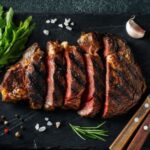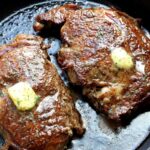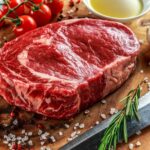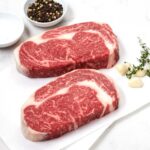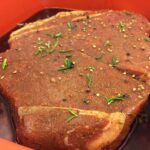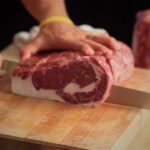How to Tenderize Ribeye Steak for Maximum Flavor: Expert Tips and Techniques
Are you tired of chewy ribeye steak that’s tough to cut and chew? Whether you’re a beginner or a seasoned grill master, learning how to tenderize ribeye steak can take your cooking to the next level. In this comprehensive guide, we’ll cover the ins and outs of tenderizing ribeye, from the best techniques and tools to use, to the secrets for enhancing flavor before cooking. By the time you’re finished reading, you’ll be a pro at turning tough cuts of ribeye into mouthwatering, juicy steaks that are sure to impress your friends and family
Why tenderizing ribeye steak?
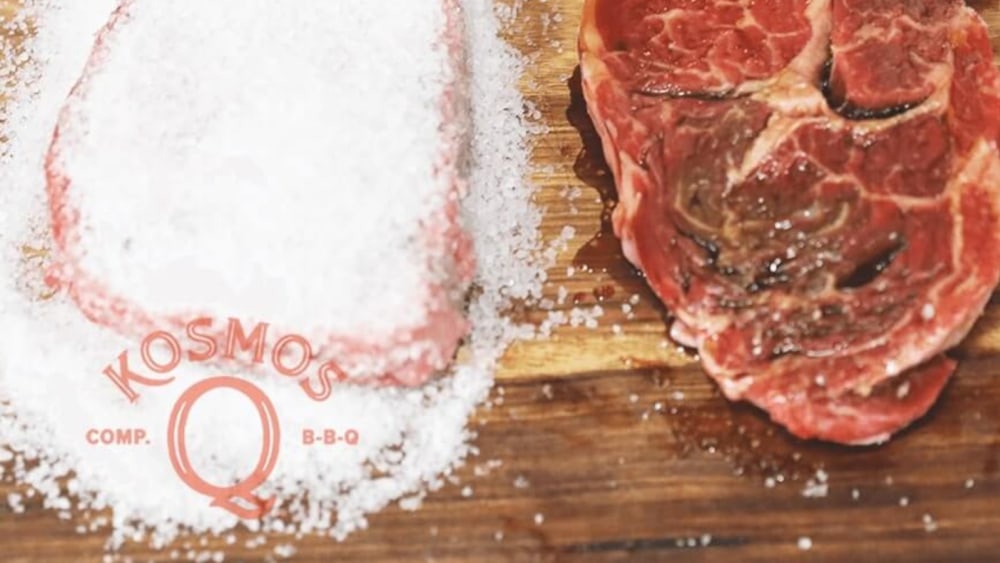
When it comes to a juicy, flavorful ribeye steak, tenderizing is essential for achieving the perfect texture and flavor. But what does tenderizing actually do, and why is it so important? Let’s take a deeper look into the science behind tenderizing steak.
Tenderizing a steak is all about breaking down the muscle fibers that make up the meat. These fibers are tough and require a certain amount of force to break them down. Connective tissue also plays a role here, as tougher cuts of meat typically have more connective tissue. By breaking down the muscle fibers and connective tissue, it makes the steak more tender and easier to chew.
Many people wonder what the best way to tenderize a steak is. The most common way is to use a meat tenderizer, which is a tool specifically designed to break down the muscle fibers. You can also use a marinade, which helps to break down the muscle fibers and add flavor at the same time. Other methods include pounding the steak with a mallet or even piercing it with a fork.
The thickness of the cut also has an effect on the tenderness of the steak. Thicker cuts require more time to tenderize, while thinner cuts can be tenderized much more quickly. Additionally, different parts of the cow are less tender than others, which is why it is important to choose the right cut of meat when tenderizing.
Tenderizing a steak is a key step in achieving the perfect texture and flavor. By breaking down the muscle fibers and connective tissue, you can make even a tough cut of meat into a juicy, tender steak. Whether you use a tenderizer, a marinade, or another method, understanding the importance of tenderizing steak is essential for creating a delicious meal.
Tenderizing techniques for ribeye steak
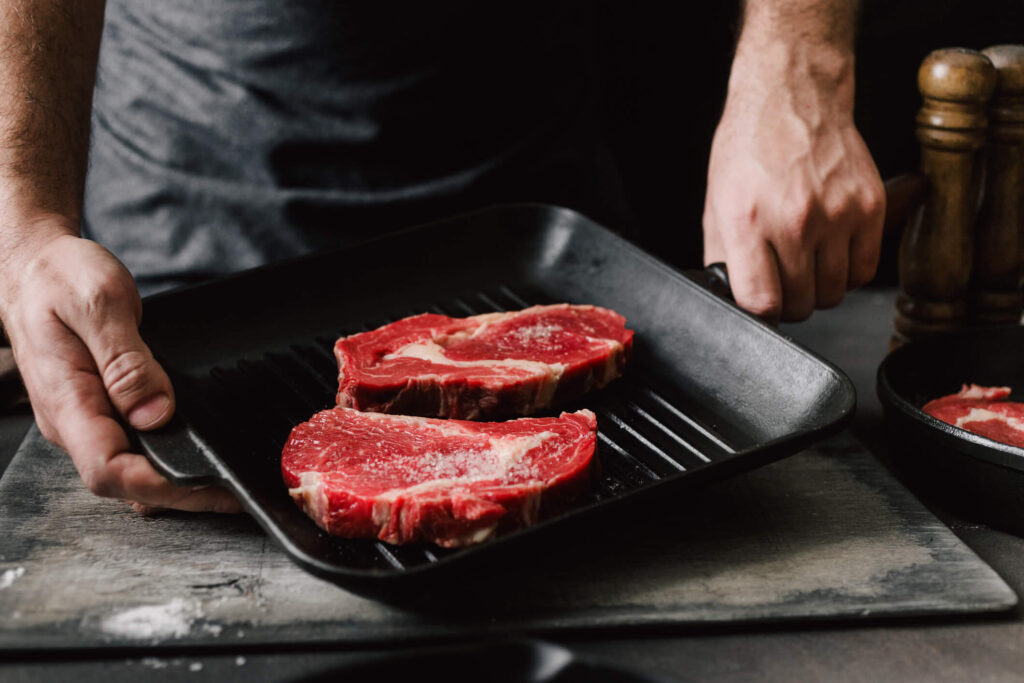
One of the most popular methods for tenderizing ribeye steak is to use a meat mallet. This involves pounding the steak with a heavy-duty mallet, which breaks down the muscle fibers of the steak and makes it more tender. It’s important to use a meat mallet with a flat-faced surface, as this will ensure an even pounding of the steak. The downside of using a meat mallet is that it can cause some of the juices to be released, resulting in a slightly dryer steak.
Another popular method of tenderizing steak is sous vide. This involves cooking the steak in a vacuum-sealed bag at a low temperature for an extended period of time. This method allows the steak to cook evenly, and the low temperature helps to keep the steak moist and tender. The downside of sous vide is that it can take a long time to cook, and it requires specialized equipment.
Slow cooking is another method of tenderizing steak. This involves cooking the steak in a liquid, such as broth or stock, at a low temperature for an extended period of time. This allows the steak to cook evenly and retain its moisture, resulting in a tender and juicy steak. The downside of slow cooking is that it can take a long time, and you may need to add additional liquid during the cooking process to keep the steak moist.
Wet and dry brining are two other methods of tenderizing steak. Wet brining involves soaking the steak in a salty solution, while dry brining involves rubbing the steak with salt and spices. Both methods help to break down the muscle fibers, resulting in a more tender steak. The downside of brining is that it can take a long time, and some people find the taste of the brine to be too salty.
Finally, marinating the steak in a mixture of oil, vinegar, herbs, and spices can also help to tenderize the steak. This method requires a longer marinating time, but it can help to break down the muscle fibers and make the steak more tender. The downside of marinating is that it can affect the flavor of the steak, so it’s important to use a marinade that complements the steak.
No matter which method you choose to tenderize your steak, it’s important to make sure that it’s cooked correctly. One way to ensure this is to use plastic wrap when cooking the steak, as this will help to keep the steak moist and tender.
By following these tips, you can ensure that your ribeye steak is always tender and delicious. So grab your meat mallet, sous vide, slow cooker, wet brine, dry brine, and plastic wrap, and get ready to enjoy the perfect steak!
Enhancing flavor before cooking:
Cooking delicious meals is a skill that requires both practice and knowledge. One way to enhance flavor before cooking is to use a variety of ingredients to season your dishes. Whether you’re cooking a steak, chicken, or vegetables, there are several ingredients that can help bring out the flavor and make your dishes stand out.
Let’s start with the basics. Always start with room temperature ingredients and use a cutting board to prepare food. To season your dishes, use kosher salt, olive oil, black pepper, soy sauce, sea salt, lemon juice, Worcestershire sauce, balsamic vinegar, onion powder, steak sauce, herb butter, compound butter, Montreal seasoning, lime juice, and fresh herbs. Each of these ingredients will help to enhance the flavor of your dishes.
Kosher salt has a coarser texture than regular table salt and can help to bring out the flavor of your dishes. Olive oil adds a rich flavor and helps to keep your dishes moist. Black pepper has a sharp, pungent flavor and can add a spicy kick to your dishes. Soy sauce is a common ingredient in Asian cooking and can add a salty, umami flavor. Sea salt has a slightly different flavor than regular salt and can be used to add a unique taste to your dishes.
Lemon juice adds a zesty flavor to your dishes and can also help to tenderize meat. Worcestershire sauce is a savory, tangy sauce that can add depth to your dishes. Balsamic vinegar has a sweet, syrupy flavor and can be used to give your dishes a touch of sweetness. Onion powder adds a savory flavor and can be used in a variety of dishes.
Steak sauce is a savory condiment that can add flavor to your dishes. Herb butter is a mixture of butter, herbs, and spices and can be used to add flavor to your dishes. Compound butter is a combination of butter and herbs and can be used to add flavor to a variety of dishes. Montreal seasoning is a blend of spices that can be used to add flavor to your dishes.
Lime juice adds a tart, citrusy flavor to your dishes. Fresh herbs add a bright, fresh flavor to your dishes. Each of these ingredients can be used to enhance the flavor of your dishes and make them stand out.
Using a variety of ingredients to season your dishes can help to bring out the flavor and make your dishes stand out. With a few simple ingredients, you can take your dishes from ordinary to extraordinary. So next time you’re cooking, don’t forget to season your dishes with these ingredients and make your dishes truly unique!
Cooking the perfect ribeye steak:
Cooking the perfect ribeye steak doesn’t have to be intimidating! With the right tools, technique, and a little know-how, you can make a delicious, juicy steak every time.
When it comes to choosing the best steaks for grilling, ribeye is a great option. This cut of beef is well-marbled, making it juicy and flavorful. Ribeye steaks should be cooked over medium-high heat to get a nice sear and keep the interior juicy. To achieve the perfect medium-rare steak, cook the steak for about 4 minutes per side, then let it rest for 5 minutes before serving.
It’s important to keep an eye on the internal temperature of the steak to ensure it’s cooked to the desired degree of doneness. An instant-read meat thermometer is the best tool for this job. For a medium-rare steak, the internal temperature should be between 135 and 140 degrees Fahrenheit.
When it comes to cooking the steak, a hot skillet or cast iron pan is the way to go. Preheat the pan before adding the steak, and don’t forget to season it with salt and pepper. Once the pan is hot, place the steak in the center and let it cook undisturbed for 4 minutes. Then, use a pair of tongs to flip the steak over and cook for another 4 minutes. This will give you a perfect sear on each side of the steak.
Once the steak is cooked, transfer it to a plate and let it rest for 5 minutes. This will allow the juices to redistribute throughout the steak, making it even more tender and flavorful.
A pro tip for the perfect steak? Use a meat thermometer to check the internal temperature and make sure it’s cooked to the desired doneness. That way, you can rest assured that your steak will be cooked to perfection every single time.
Serving and enjoying tender ribeye steak
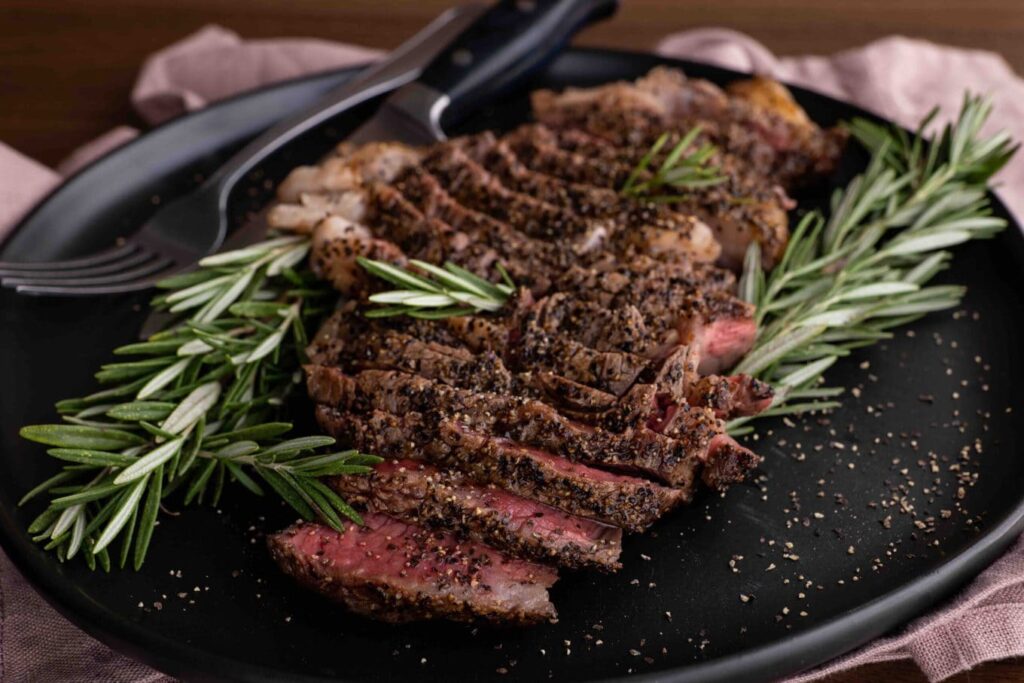
Serving and enjoying tender ribeye steak is an experience that all steak lovers can truly appreciate. There’s nothing quite like the juicy, succulent flavor of a perfectly cooked ribeye steak. But sometimes, it can be tough to get the perfect tenderness out of ribeye or even tougher cuts of steak. That’s why we’ve put together this helpful guide for making and enjoying your own amazing ribeye steaks.
The first step to perfect ribeye steaks is to choose your favorite cut. Ribeye is the perfect cut for steak lovers who want maximum flavor and tenderness. It’s packed with fat, which adds flavor and helps keep it juicy. But if you’re looking for leaner cuts of steak, consider flank steak, skirt steak, and New York strip steak.
No matter what cut you choose, it’s always a good idea to marinate your steak. Not only does marinating add flavor, but it also helps tenderize the steak and break down tough fibers. You can find lots of great steak marinades online, or you can make your own. Just remember to leave the steak in the marinade for a short period of time — the longer you leave it, the saltier it will become.
Once you’ve marinated your steak, it’s time to get cooking. You can cook it in a variety of different ways — pan-frying, grilling, or even baking — but the best results come from grilling. If you’re grilling, make sure to hit the sweet spot: cook the steak over high heat for a few minutes, then turn down the heat and let it cook slowly. This will ensure that the steak is cooked evenly and remains juicy and tender.
Finally, it’s important to consider the tenderizing process. This doesn’t mean pounding the steak with a mallet — that’s basically just bruising the steak and releasing the meat’s natural juices. Instead, look for a steak tenderizer that’s designed specifically for cuts of beef. These tenderizers work by breaking down the muscle fibers in the steak, which makes it easier to cut and chew.
By taking the time to marinate, cook, and tenderize your steak, you’ll be rewarded with amazing ribeye steaks that your family and friends will love. This method is perfect for home cooks who want to enjoy the most flavor and tenderness from their steak — and it’s a great way to get the most out of leaner cuts, too. So the next time you’re looking for a delicious steak dinner, give this method a try. You won’t be disappointed!
More Ribeye Recipes and Resource
A Simple Recipe Using Rib Eye Steak
Sizzle and Satisfy: A Delicious BBQ Rib Eye Steak Recipe for Any Occasion
5-Star Crockpot Ribeye Steak Recipe: A Slow-Cooked Sensation
Ribeye Steak Sandwich Recipe: A Delicious Twist on a Classic Dish
The Perfect Thin Ribeye Steak Recipe: A Step-by-Step Guide
Best Way To Cook A Ribeye Steak on The Grill
How to Cook a Ribeye Steak Without a Cast Iron Skillet
How to Cook a Ribeye Steak in a Cast Iron Skillet for Perfect Results Every Time
How to Cook Bison Ribeye Steak: The Ultimate Guide
How To Cook Wagyu Ribeye Steak (Easy Than You Think)
How Long To Marinate Ribeye Steak? (for Perfect Juicy, Flavorful Results)
How to Cut Ribeye Steak (Long Guide for the Perfect Steak)
How Much is a Ribeye Steak? (Let’s Find The Best Deals)
This article is a part of The Ultimate Steak Cookbook, our ever-growing mini encyclopedia on techniques for delicious steak recipes. Please bookmark and return. There will be a lot of useful information for you.

Shara @The Bird BBQ
Shara loves to experiment with different flavors and techniques when it comes to BBQ. She has been perfecting her craft for years and loves hosting backyard BBQs with friends & family. She often comes up with creative recipes that her guests rave about.

